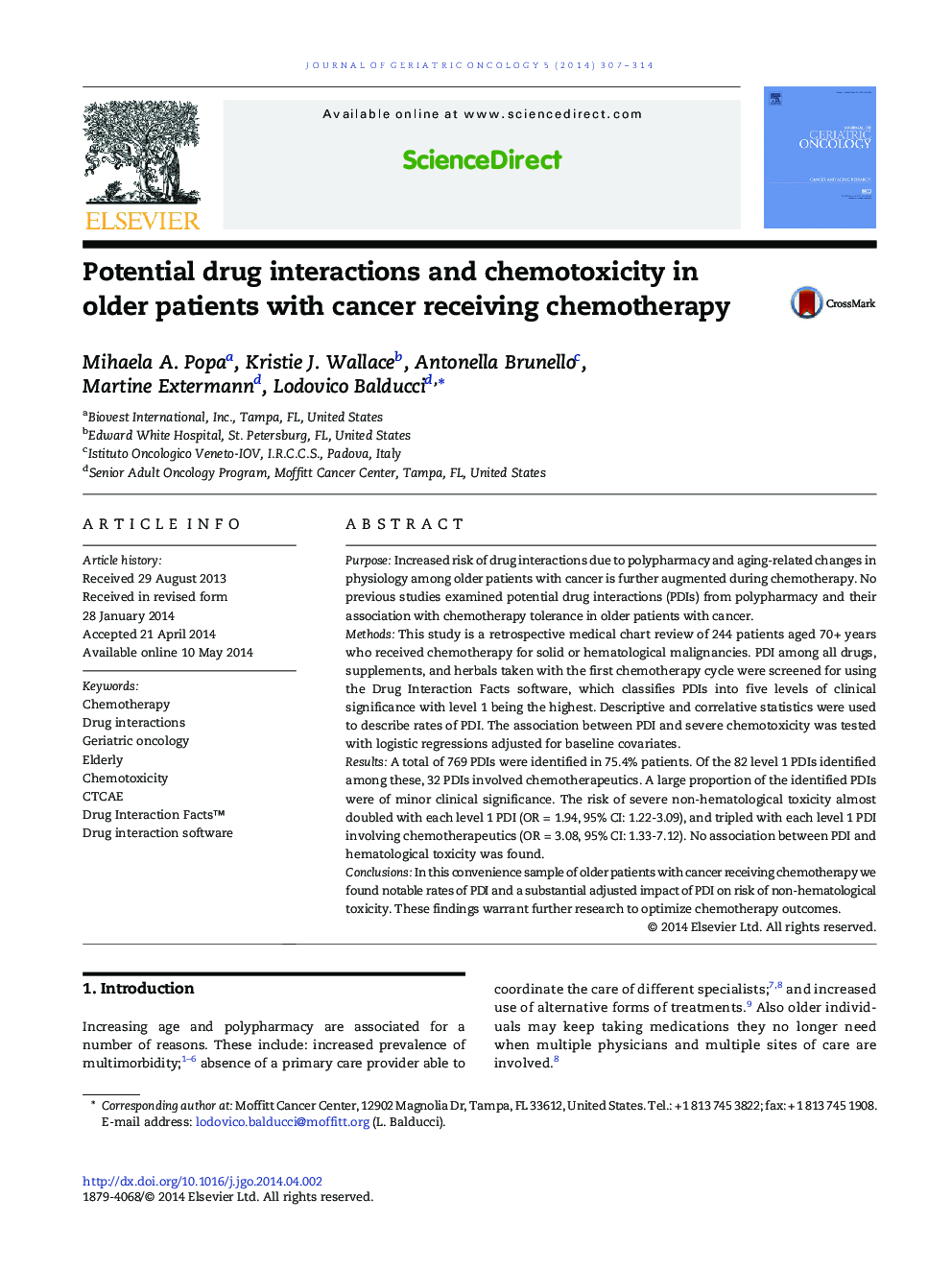| Article ID | Journal | Published Year | Pages | File Type |
|---|---|---|---|---|
| 1912721 | Journal of Geriatric Oncology | 2014 | 8 Pages |
PurposeIncreased risk of drug interactions due to polypharmacy and aging-related changes in physiology among older patients with cancer is further augmented during chemotherapy. No previous studies examined potential drug interactions (PDIs) from polypharmacy and their association with chemotherapy tolerance in older patients with cancer.MethodsThis study is a retrospective medical chart review of 244 patients aged 70 + years who received chemotherapy for solid or hematological malignancies. PDI among all drugs, supplements, and herbals taken with the first chemotherapy cycle were screened for using the Drug Interaction Facts software, which classifies PDIs into five levels of clinical significance with level 1 being the highest. Descriptive and correlative statistics were used to describe rates of PDI. The association between PDI and severe chemotoxicity was tested with logistic regressions adjusted for baseline covariates.ResultsA total of 769 PDIs were identified in 75.4% patients. Of the 82 level 1 PDIs identified among these, 32 PDIs involved chemotherapeutics. A large proportion of the identified PDIs were of minor clinical significance. The risk of severe non-hematological toxicity almost doubled with each level 1 PDI (OR = 1.94, 95% CI: 1.22-3.09), and tripled with each level 1 PDI involving chemotherapeutics (OR = 3.08, 95% CI: 1.33-7.12). No association between PDI and hematological toxicity was found.ConclusionsIn this convenience sample of older patients with cancer receiving chemotherapy we found notable rates of PDI and a substantial adjusted impact of PDI on risk of non-hematological toxicity. These findings warrant further research to optimize chemotherapy outcomes.
